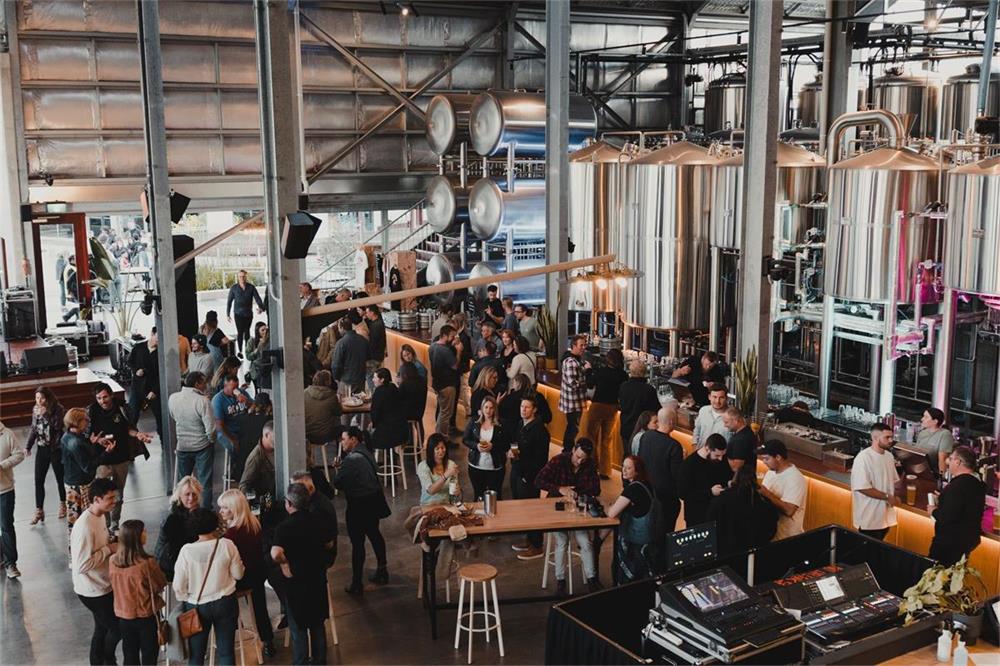The Rise of Automated Brewing Systems
Brewing beer has always been an art form—a delicate dance of science and creativity. But let’s face it, traditional brewing can be labor-intensive and time-consuming. Enter automated brewing systems, the game-changer for homebrewers and professional brewers alike. These systems are revolutionizing the industry by taking the guesswork out of the process while ensuring consistency, efficiency, and top-notch quality.
In this article, we’ll delve into the ins and outs of automated brewing systems, exploring their functions, benefits, solutions for different users, trends, challenges, and much more. Ready to dive in? Let’s get started!

Overview of Automated Brewing Systems
Automated brewing systems simplify the beer-making process by automating key steps such as mashing, boiling, fermenting, and even cleaning. These systems range from compact models designed for home use to large-scale solutions for commercial breweries. Equipped with smart sensors, intuitive controls, and often app integration, they ensure precision and consistency in every batch.
Whether you’re a hobbyist who loves experimenting with flavors or a brewery owner aiming for scalability, these systems cater to a wide range of needs. Think of them as the brewing world’s equivalent of a self-driving car—all the control with minimal effort.
The Core Functions of Automated Brewing Systems
At their heart, automated brewing systems are designed to handle the essential steps of beer production. Let’s break it down:
- Mashing and Lautering: These systems precisely control temperature and timing to extract fermentable sugars from grains. They also separate the wort from spent grains efficiently, saving you hours of manual work.
- Boiling and Hopping: The system boils the wort and adds hops at predetermined intervals, ensuring consistency and flavor profile.
- Cooling and Fermentation: Automated chilling functions cool the wort to the ideal fermentation temperature, while integrated fermenters maintain stable conditions for yeast to do its magic.
- Cleaning and Maintenance: Many systems come with automated cleaning cycles, reducing the tedious scrubbing and sterilizing tasks.
Advantages of Using Automated Brewing Systems
Why should you invest in an automated brewing system? Here are some compelling reasons:
- Precision and Consistency: Automated systems eliminate human error, ensuring every batch tastes just right. No more “oops, I added too much hops!” moments.
- Time Efficiency: Brewing beer manually can take days. Automation speeds up the process, freeing you to focus on creativity or other tasks.
- Ease of Use: Whether you’re a newbie or a seasoned brewer, these systems offer user-friendly interfaces, making brewing as easy as setting a coffee maker.
- Scalability: Commercial brewers can scale production without compromising on quality, while homebrewers can produce larger batches effortlessly.
- Experimentation: Automated systems often come with programmable features, allowing brewers to experiment with recipes and techniques easily.

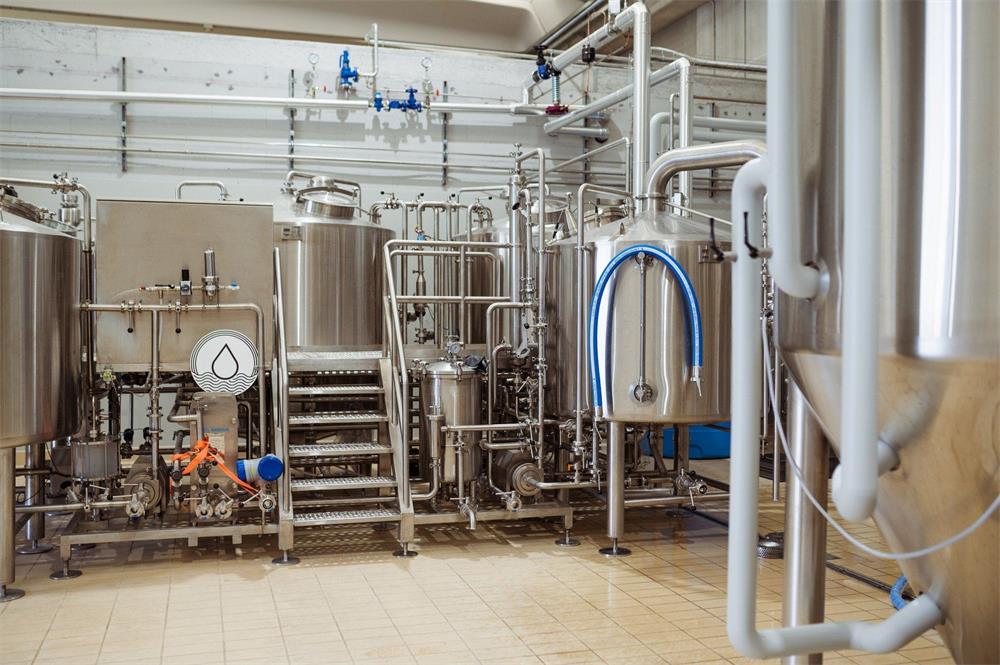
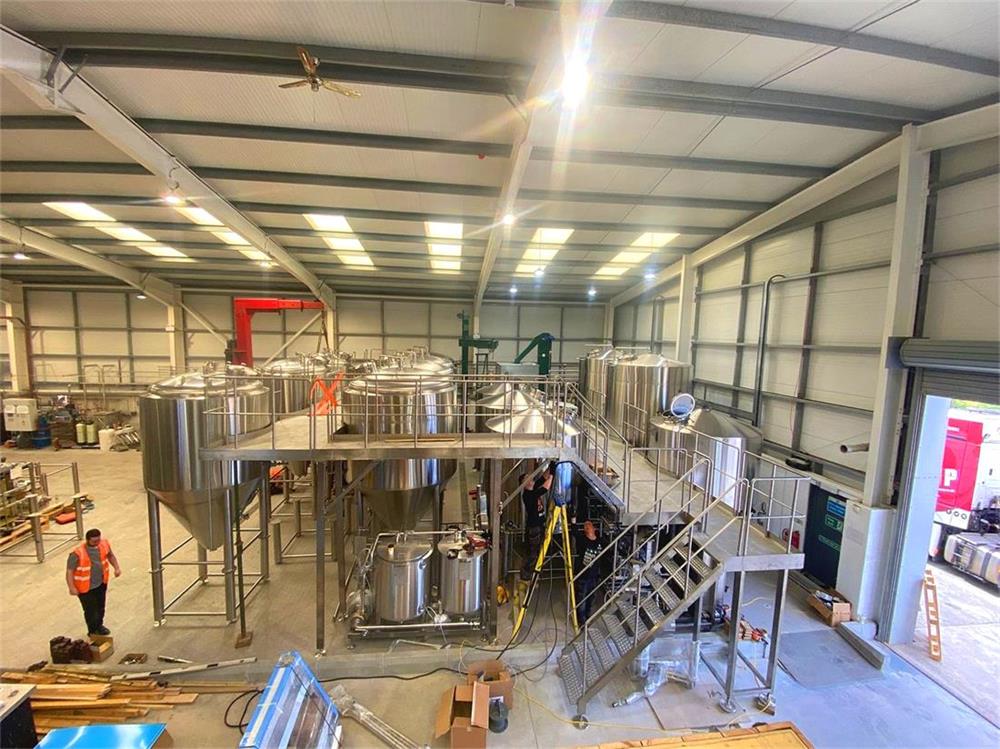
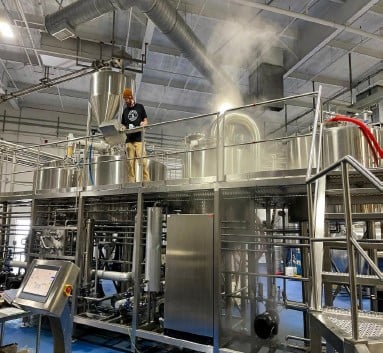
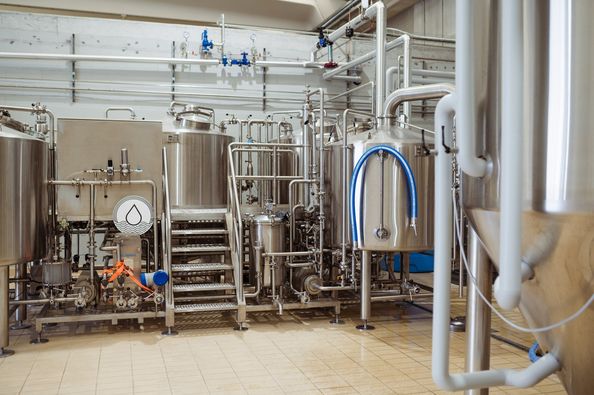
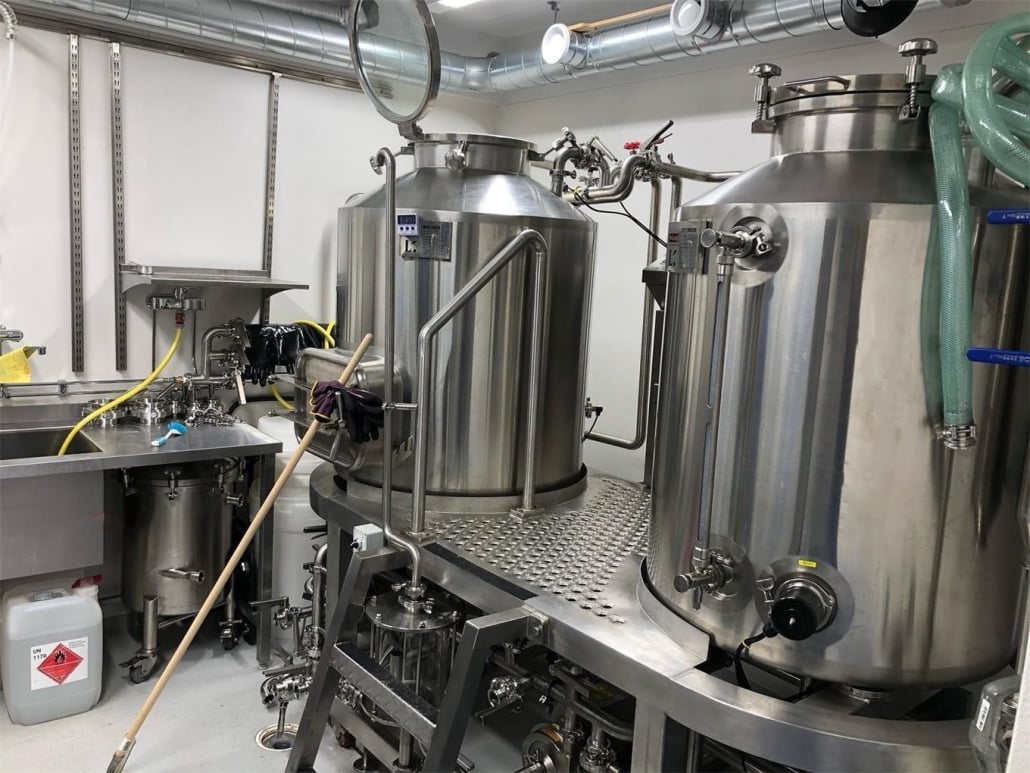
Automated Brewing Systems Solutions for Different Users
Automated brewing systems aren’t one-size-fits-all. Here’s how they cater to different needs:
- Homebrewers: Compact, affordable systems like the Grainfather or Brewie+ are perfect for enthusiasts who want to brew small batches at home. These systems often include app control and recipe libraries.
- Craft Breweries: Mid-sized systems, such as those from BrewMagic or Speidel, offer scalability and advanced customization for craft brewers aiming to stand out.
- Industrial Breweries: Large-scale solutions from brands like BrauKon or Alpha Brewing Operations are designed for mass production, with features like automated packaging and quality control.
- Educational Institutions: Some systems are tailored for teaching brewing science, providing hands-on experience with professional-grade technology.
Technology Trends in Automated Brewing Systems
| Trend | Details |
|---|---|
| IoT Integration | Smart brewing systems connect to apps, allowing remote monitoring and control. |
| AI and Machine Learning | Systems predict optimal brewing parameters and adapt recipes for consistency. |
| Eco-Friendly Designs | Energy-efficient models with water recycling and reduced waste features. |
| Modular Systems | Customizable setups that let users upgrade components as needed. |
| 3D Printing | Breweries are leveraging 3D printing for rapid prototyping of new equipment. |
Challenges and Precautions of Automated Brewing Systems
| Challenge | Precaution |
|---|---|
| High Initial Cost | Research and compare systems to find the best value for your budget. |
| Learning Curve | Choose systems with robust customer support and user-friendly manuals. |
| Maintenance Requirements | Regularly clean and service the system to prevent breakdowns. |
| Limited Customization for Some | Verify the system supports recipe flexibility if experimentation is important. |
| Dependency on Power/Tech | Have backup power solutions and avoid over-reliance on automation alone. |
Technical Support and Maintenance for Automated Brewing Systems
Investing in an automated brewing system means committing to regular maintenance and occasional troubleshooting. Many manufacturers offer technical support packages that include:
- 24/7 Helplines: For immediate assistance with system issues.
- Scheduled Maintenance: Regular servicing to ensure optimal performance.
- Software Updates: Keeping the system’s firmware up-to-date with the latest features.
- Spare Parts Availability: Ensuring quick replacement of worn-out components.
Pro tip: Always follow the manufacturer’s cleaning and maintenance guidelines to extend the lifespan of your system.

Choosing the Appropriate Automated Brewing System Model and Brand
Selecting the right system depends on your needs and budget. Here’s what to consider:
- Batch Size: Are you brewing 5 gallons at a time or 500?
- Features: Look for app integration, programmable recipes, and modularity.
- Brand Reputation: Research customer reviews and testimonials.
- Cost: Automated systems range from $500 for basic models to $50,000+ for industrial setups.
- Support and Warranty: Prioritize brands that offer robust post-sale support.
FAQ
| Question | Answer |
|---|---|
| What is an automated brewing system? | A machine that automates beer production steps like mashing and fermenting. |
| Are automated systems suitable for beginners? | Absolutely! Many models are user-friendly and designed for novice brewers. |
| Can I customize recipes with these systems? | Yes, most systems allow full customization of brewing parameters. |
| How much do they cost? | Prices range from $500 for home models to over $50,000 for industrial ones. |
| What maintenance is required? | Regular cleaning, software updates, and occasional part replacements. |
Additional FAQs About Automated Brewing Systems
1) How do automated brewing systems handle oxygen control during transfers?
- Many systems include closed-loop transfers, CO2 purging routines, and inline dissolved oxygen (DO) sensing. Look for pressure-capable fermenters and automated valve sequences to keep DO below 50–100 ppb on cold-side moves.
2) Can automation improve repeatability across batch sizes?
- Yes. Recipe profiles with step mashing, ramp rates, flow/volume metering, and PID temperature control scale predictably if your system has calibrated flow meters and load cells. Verify with water trials and gravimetric checks before production.
3) What KPIs should I track with an automated system?
- Brewhouse efficiency, knockout time, energy per hL/BBL, water use ratio (hL water per hL beer), cellar tank turns, DO at transfer/pack, and CIP cycle time/chemistry conductivity. Many platforms export these to CSV/APIs.
4) How do AI/ML features actually help brewers?
- Current deployments focus on anomaly detection (temp/pH drift), predictive maintenance (pump/sensor failure risk), and adaptive mash profiles based on malt lot analyses. They flag issues early rather than “brew for you.”
5) What’s the most cost-effective automation upgrade for small breweries?
- Start with automated temperature control on the brewhouse and unitanks, add flow meters and load cells for accuracy, then implement automated CIP with verified spray coverage. These deliver fast ROI before full PLC/HMI upgrades.
2025 Industry Trends in Automated Brewing Systems
- OPC UA-native connectivity: Vendors ship controllers that plug into plant SCADA/MES and cloud dashboards without custom middleware.
- Sensor standardization: Inline DO/CO2/turbidity ports and ISO 2852 tri-clamps are now baseline on premium skids.
- Auto-CIP with validation: Conductivity, temperature, and flow-verified CIP cycles reduce chemicals/water 10–25%.
- Energy optimization: Heat-recovery and smart kettle controls cut kWh/hL; VFDs on pumps standard on ≥10 hL systems.
- Secure remote support: VPN gateways with role-based access and audit logs to meet IT/OT security policies.
2025 Data Snapshot: Adoption and Performance
| Metric | 2022 | 2024 | 2025 (proj.) | Notes / Sources |
|---|---|---|---|---|
| Breweries with brewhouse PLC/HMI automation (craft segment) | 46% | 55% | 60–65% | BA supplier briefings; vendor surveys |
| Systems with integrated auto-CIP verification | 22% | 31% | 38–45% | OEM application notes |
| Inline DO monitoring at cold-side transfer | 28% | 36% | 42–48% | Instrument vendors; QA sessions |
| Average water use ratio (automated vs. manual) | 5.5 vs 6.5 | 5.2 vs 6.2 | 4.8–5.0 vs 5.8–6.0 | Energy/water audits |
| Sites using OPC UA/Cloud dashboards | 18% | 27% | 35–40% | SCADA integrators |
Sources:
- Brewers Association: https://www.brewersassociation.org
- Institute of Brewing & Distilling (IBD): https://ibd.org.uk
- Instrument/OEM briefs (inline DO/CO2, CIP validation)
- AMPP/ASTM references for sanitary stainless care where relevant
Latest Research Cases
Case Study 1: Auto-CIP and Inline QA Reduce Losses (2025)
Background: A 15 hL craft brewery struggled with variable DO at transfer and long CIP cycles.
Solution: Upgraded to automated CIP with conductivity/temperature setpoints and installed inline DO meters at brite tank inlet; added automated CO2 line purges and closed transfer routines via PLC.
Results: Chemical use down 18%; CIP time reduced 22%; package TPO reduced 25–30%; first-year dump rate fell from 4.2% to 1.2%. Sources: OEM application report; BA Quality seminar materials.
Case Study 2: Heat-Recovery + Smart Kettle Controls Cut Energy (2024)
Background: A 30 hL production brewery targeted utility savings without compromising throughput.
Solution: Implemented wort-to-HLT heat recovery, kettle boil-off rate control with real-time energy metering, and VFDs on brewhouse pumps tied to PLC recipes.
Results: Energy intensity decreased 15–20% (kWh/hL); knockout time stable; payback in ~16 months via energy savings and reduced maintenance. Sources: Energy audit summary; vendor engineering notes.
Expert Opinions
- Dr. Katherine C. Smart, Professor of Brewing Science; Former Global VP R&D, AB InBev
Viewpoint: “Automated brewing systems deliver value when paired with validated QA and CIP. Instrumentation plus SOPs are what translate automation into quality.” - John Mallett, Brewing Operations Expert; Author of Malt: A Practical Guide
Viewpoint: “Calibrated measurement—temperature, flow, mass, and DO—matters more than buttons on a screen. Accurate inputs make automation trustworthy.” - Oliver Wesseloh, Dipl.-Braumeister, Co-founder of Kreativbrauerei Kehrwieder
Viewpoint: “Use automation to remove drudgery and standardize the basics, then spend human time on sensory and recipe development.”
Citations:
- Brewers Association Quality: https://www.brewersassociation.org
- IBD technical resources: https://ibd.org.uk
- Energy/water efficiency guidance from industry audits and OEM technical papers
Practical Tools and Resources
- ProBrewer automation forums and calculators: https://www.probrewer.com
- OPC UA and brewery SCADA integrators directories
- Instrument vendors for inline DO/CO2/turbidity and mass/density meters (e.g., Anton Paar): https://www.anton-paar.com
- BA Sustainability and Quality tools: https://www.brewersassociation.org
- CIP validation guides (riboflavin test methods) and ASTM A967 passivation standard: https://www.astm.org/a0967_a0967m-17.html
Note: When evaluating automated brewing systems, request P&IDs, I/O lists, utility loads, cybersecurity approach (VPN/RBAC), calibration procedures, CIP validation criteria, and FAT/SAT scopes. Verify that recipe control aligns with your mash/lauter configuration and that spare parts/support are available in your region.
Last updated: 2025-09-02
Changelog: Added 5 focused FAQs, 2025 trend snapshot with adoption/efficiency table, two recent automation case studies, expert viewpoints, and vetted tools/resources with authoritative links.
Next review date & triggers: 2026-01-15 or earlier if major OEM feature sets change, BA/IBD issues updated QA/CIP guidance, or sensor/SCADA standards (e.g., OPC UA profiles) are revised.
Share this entry
Interested in learning more about Brewing Systems including additional details and pricing information? Please use the form below to contact us!
YOLONG BREWERY EQUIPMENT FAQS
- Commercial Brewery / Craft Brewery / Microbrewery / Nanobrewery
- What is The Difference Between Craft Beer and Industrial Beer?
- The Bespoke Differences In Custom Brewing Systems
- Everything You Need to Know About Kettle Souring
- How to Choose Brewing Equipment for Your business?
- How To Choose The-Best Partner To Build Your Commercial Microbrewing System?
- Two Detection Sensors That You Need To Use In Your Brewhouse System
- Remote Control Applications in Brewing Equipment/How does it work?
- How To Clean Your Brand New Brewery Tanks?

